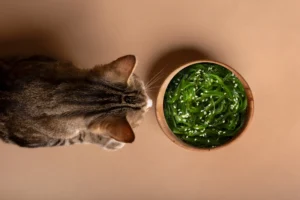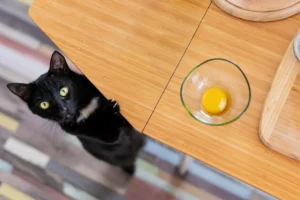Dog eye discharge, dog eye boogers, pus, gunk, goop or crusts; no matter how little it is, is simply enough to have us pet parents googling whether it should be of any concern (and even fearing that our furbaby’s eyesight might be in danger!). Here at Petchef, we listen and we don’t judge because we want nothing but to empower our fur-parents with the best knowledge they could possibly have for their fur kids.
In this article, we’ll explore our furparent’s Frequently Googled/Asked/ChatGPT-ed Questions on why dogs develop eye boogers, what’s normal versus abnormal, and how to care for your dog’s eyes at home.
Table of Contents
What causes eye boogers
Eye boogers, or ocular discharge, are a combination of mucus, tears, and debris. Ranging from harmless to alarming, they can provide valuable insights into a dog’s overall health. Some common causes for eye boogers include:
Natural tear production
Dogs’ eyes produce tears to keep them moist and free of debris. When tears mix with mucus, it forms discharge.
Environmental irritants
Dust, pollen, wind, and smoke can irritate a dog’s eyes, leading to increased tear production.
Breed-specific factors
Some breeds, such as Pugs, Shih Tzus, and Bulldogs, are more prone to eye boogers due to their facial structure and shallow eye sockets.
Health conditions
Allergies, infections, and eye injuries can also cause eye boogers.
Why does my dog always have eye boogers?
Similar to us humans, dogs also naturally produce some eye discharge as part of their tear drainage system to flush out dust/irritants. However, certain factors could make eye boogers a consistent occurrence:
- Anatomy: breeds with protruding eyes or blocked tear ducts may have more noticeable discharge.
- Tear evaporation: tears can dry out and leave a crusty residue at the corner of the eyes.
- Daily exposure: dogs frequently encounter dust, pollen, or other particles that trigger mild tear production to flush out the irritants.
How Petchef helps
We believe in healthy, clean food being the base of a strong and healthy dog.
At Petchef, we ensure that all the ingredients that go into our dog food recipes are made of fresh, clean ingredients only! All the meals tailored for dogs contain:
50%+ meat (chicken, buffalo, beef, salmon, tuna, duck, etc)
45%+ vegetables and broth for additional nutrients
3.5% herbs and oils
It’s completely free of preservatives, additives, fillers and grains! If you’d love for your dog to eat the food they were born to eat, come have a chat with our friendly pet nutritionist to find the ideal meal for your pet
What is a normal vs a concerning amount of eye boogers?
Normal: A small amount of discharge that’s easily cleaned and doesn’t recur frequently is normal.
Concerning:
- Persistent or excessive buildup.
- Discharge accompanied by redness, swelling, or pawing at the eyes.
- Sudden changes in the quantity or frequency of eye boogers.
However, if your gut tells you something’s off about the amount and frequency of eye discharge your dog’s producing, it’s always better to err on the side of caution and seek a vet’s opinion on it.
What are the different types of eye boogers in dogs?
As with bodily fluids, the different types of eye boogers often present themselves in these 3 consistencies:
- Watery discharge: indicates mild irritation, such as allergies or exposure to wind and dust.
- Thick mucus: may signal an eye infection, conjunctivitis, or dry eye syndrome.
- Crusty eye boogers: common in the morning and usually harmless unless they’re excessive or accompanied by redness.
What does the colour of my dog’s eye boogers mean?
Clear
Typically normal, often caused by environmental factors or mild irritation.
White/Yellow
Could indicate a bacterial or viral infection, such as conjunctivitis.
Green or Gray
A strong sign of infection, requiring prompt veterinary attention.
Red/Bloody
May point to injury, glaucoma, or other serious conditions needing immediate care.
Read more about what the consistency and colour of your dog’s eye boogers could mean here: details about dog eye booger colours.
My dog’s eye has boogers and some redness, swelling, etc
Some eye boogers do occur alongside other symptoms. While this should not be used to self-diagnose, it could also indicate an underlying condition and a vet’s consultation.
Redness
Can signify conjunctivitis, allergies, or inflammation.
Swelling
May point to an eye injury or infection.
Squinting or pawing at the eyes
Suggests discomfort or pain and warrants a vet visit.
Cloudy eyes
Could be linked to cataracts, glaucoma, or corneal ulcers.
When should you see a Vet?
Some eye boogers do occur alongside other symptoms. While this should not be used to self-diagnose, it could also indicate an underlying condition and a vet’s consultation.
- If eye boogers are persistent and don’t resolve with cleaning.
- If the discharge changes in color, consistency, or quantity.
- If other symptoms like redness, swelling, or behavioral changes (e.g., scratching or avoiding light) accompany the discharge.
- If your dog’s vision seems impaired or they’re bumping into objects.
- If your dog shows signs of pain or discomfort, such as whimpering when touched near the eyes.
Sudden onset of symptoms should always prompt a vet visit, as untreated conditions can worsen.
Safe home remedies for managing eye boogers
ONLY IF there are no other eye conditions present that warrant a visit to the vet, here are some ways you may use to first manage your dog’s eye boogers:
Cleaning the eyes
Use a soft, damp, lukewarm cloth or cotton pad to gently wipe away discharge. Avoid pressing too hard on the eye area.
Saline solution
A vet-recommended saline rinse can help flush out debris and soothe mild irritation.
Regular grooming
Trim long fur around the eyes to reduce irritation and prevent debris buildup.
Eye wash
Over-the-counter pet-safe eye washes can help cleanse and hydrate your dog’s eyes.
What you should Never do
A dog’s eyes are among their most sensitive areas and need to be handled with extra care. Hence careful handling is crucial to avoid causing injuries and aggravating existing issues. Never ever:
Use human medications
Never use human eye drops or ointments on your dog without veterinary advice.
Ignore chronic symptoms
Persistent or severe symptoms can worsen if untreated.
Use dirty hands/materials
Always ensure your hands and cleaning tools are clean to prevent introducing bacteria.
Pick at crusty boogers
Soften crusts with a damp cloth before gently wiping them away.
Conclusion
In conclusion, dog eye boogers are usually harmless but if your dog’s eyes show any unusual symptoms (redness, swelling, discharge, or discomfort), consult your vet before attempting any treatment at home.
By understanding the causes and recognizing when something’s wrong, you can ensure your dog’s eyes remain healthy and comfortable! Regular cleaning, observation, and seeking veterinary advice when necessary will keep your furry friend and their eyes happy and healthy.











